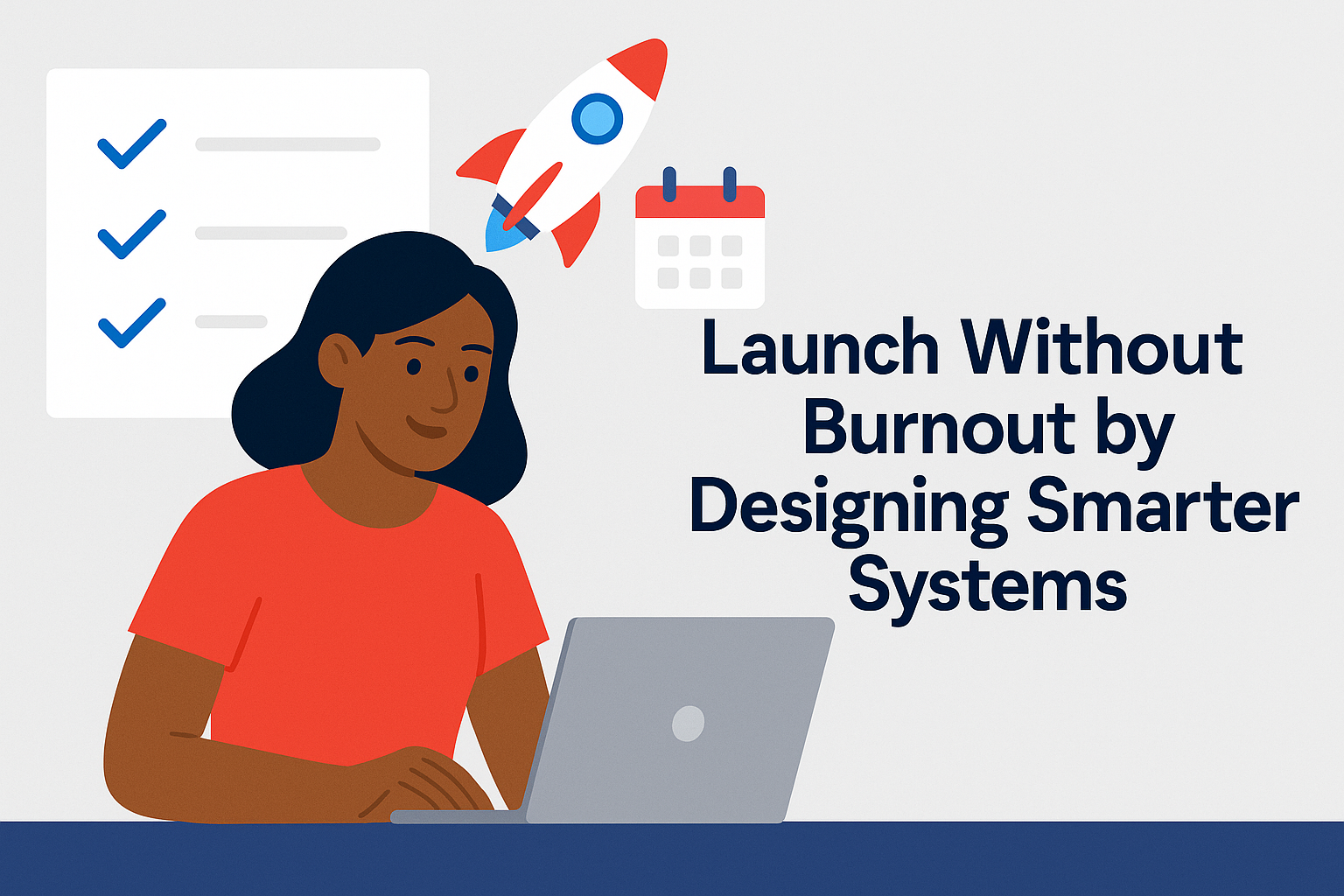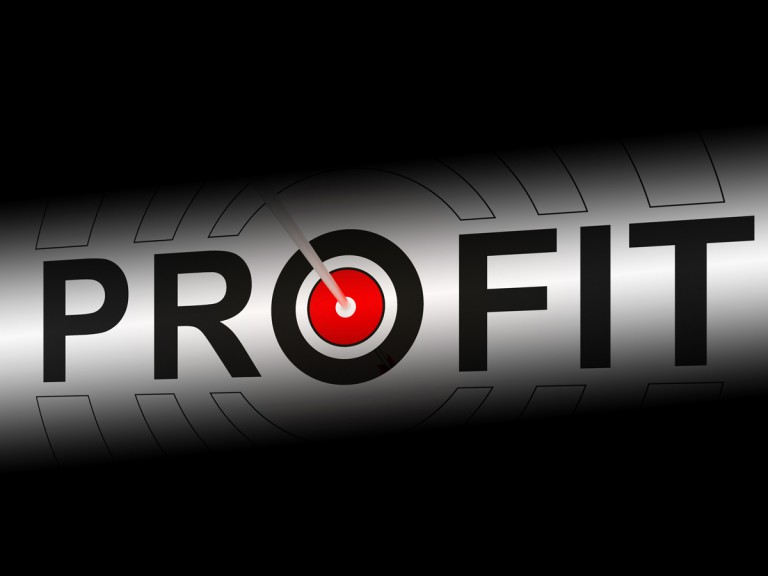CEO Mindset Monday
Time freedom isn’t just about better tools—it’s about better thinking. An automation-first mindset means that before you decide to tackle a task yourself, your first question is: How can this be done without me? It’s a mental reframe that pulls you out of the habit of being the doer and puts you in the role of designer. And that’s where growth starts.
For a lot of mid-career entrepreneurs building their business alongside a full-time job, time is the rarest resource. You already know you can’t “just work harder” to get ahead—it’s not sustainable. The leverage comes when you stop defaulting to manual and start treating every recurring task as an opportunity to design a repeatable, automated process. That’s the mindset shift that lets you work less without sacrificing results—and ultimately, it’s what gives you the space to focus on the high-value moves that actually grow your business.
When I first started Backbone America, I kept most of the work in my own hands—automating a little here and there, but still carrying more than I needed to. I didn’t ask for much help, and I didn’t design for automation from the start. The result? I stayed busier than I had to be, even when the solutions were right in front of me.
It wasn’t until I shifted to an automation-first approach that I freed up the time and mental space to focus on growth instead of constant upkeep. That shift is what I now help others make—because once you learn to think this way, your business changes in ways that manual effort alone can’t match.
Why Mindset Comes Before Tools

An automation-first mindset forces you to step back and think like a designer, not just an operator. It asks: What is the simplest, most sustainable way this task can get done without my ongoing involvement? That question changes the way you see your workload. Instead of adding tools on top of an existing manual process, you start redesigning the process so it can run without you.
This matters because tools don’t fix inefficiencies by themselves. If your workflow is poorly structured, automation will just speed up the wrong steps—or worse, lock in a bad process. By shifting your mindset first, you make sure the automation you do implement actually works in your favor.
In my own business, I’ve seen the difference. Early on, I would adopt a tool because it seemed helpful, but I hadn’t rethought the process it was meant to improve. The result? More dashboards to check, more settings to tweak, and no real time saved. Once I learned to start with the mindset—something I gained as a Business Process Automation Engineer—designing for automation first meant that every tool I used delivered a bigger return.
Don’t multiple Garbage In, Garbage Out.
The truth is, automation is a multiplier. If you put in a good system, you get exponential results. If you put in a bad one, you just multiply the inefficiency. It’s the old GIGO principle—Garbage In, Garbage Out.
In other words, the quality of your output can only be as good as the quality of your input. Automating a flawed process doesn’t fix the flaws; it just delivers the wrong results faster. That’s why the mindset shift is so critical—you’re not just automating tasks, you’re shaping the way work gets done so the automation has something worth multiplying.
The CEO Shift – From Operator to Designer
An automation-first mindset requires you to stop thinking like the person doing the work and start thinking like the person designing the work. That’s the CEO shift—moving from operator to designer.
An operator asks, “What’s the next task, and how do I get it done?” A designer asks, “What’s the goal, and what system will get us there with the least friction?” This shift doesn’t just change how you approach a single project—it changes the way you run your entire business.
When you’re in operator mode, you can only move as fast as your own capacity. Every task depends on you showing up and doing it. But when you’re in designer mode, you build processes, automation, and support structures that keep running whether you’re at your desk or not. That’s where time freedom—and the ability to scale—actually come from.

In Backbone America, this shift meant looking at recurring work like client onboarding, email sequences, and follow-ups, and asking: How can this run with minimal hands-on input from me? Once I designed those systems, they didn’t just save me hours each week—they freed me to focus on higher-value decisions that directly impacted revenue and growth.
Being the designer doesn’t mean you never touch the work. It means you decide when and how you touch it, based on impact—not urgency. That’s a mindset shift that puts you firmly in control of your time and your business direction.
How an Automation-First Mindset Increases Earnings
Working less doesn’t mean earning less—if you structure your business so that every freed-up hour is invested in high-value work. That’s where an automation-first mindset delivers its biggest payoff.
When you stop spending your best energy on repeatable, low-value tasks, you create capacity for activities that actually grow your business:
Developing offers your audience is asking for
Building strategic partnerships
Improving your client experience so they return and refer
Testing and refining your sales process for higher conversion rates
Automation also accelerates delivery, which directly impacts revenue. A faster onboarding process means clients start sooner. Automatic payment collection means fewer delays and missed invoices. Consistent follow-up means fewer leads slipping through the cracks.
For example, in my own business, automating lead follow-up didn’t just save time—it increased conversion rates because potential clients heard from me promptly, every time. That speed builds trust and moves people from interest to purchase faster.
And the ROI isn’t just in revenue. Efficiency also means you can handle more clients without increasing your workload—or your overhead. You’re not hiring extra help for every growth stage, because your systems absorb the demand. The result is higher margins and a more scalable business model.
The takeaway? Automation isn’t just a time-saver—it’s a profit multiplier, but only if you use the extra time for intentional, growth-focused work.
Overcoming Common Mental Blocks
Shifting to an automation-first mindset isn’t just about learning new tools—it’s about letting go of old habits and beliefs that keep you stuck in manual mode. Here are a few of the most common mental blocks, and how to move past them.
1. “It’s faster if I just do it myself.”
This might be true the first time. But the problem is, it’ll also be true the tenth time, and the hundredth. Each time you repeat the same task manually, you’re taking time from something more valuable. The faster route in the short term is often the most expensive in the long term.
I’ve made this mistake in Backbone America—writing custom email responses to every inquiry, even when the questions were nearly identical. In my mind, it only took a few minutes. But those minutes added up to hours every month that could have gone toward strategy, partnerships, or product development. Automating those responses with a well-crafted email sequence saved time without sacrificing personalization.
2. Fear of losing control.
Some entrepreneurs hesitate to automate because they feel they’ll lose visibility or quality control. The reality? Well-designed automation increases both. You can set clear checkpoints, quality standards, and reporting so you always know what’s happening—without being the bottleneck.
I used to think I had to personally review every new client onboarding step to ensure it met my standards. But once I built an automated onboarding process with clear milestones, I could see exactly where each client was in the journey without manually checking in. It actually gave me more insight, not less—and the clients experienced a smoother start.
3. Struggling to let go when the results reflect on you.
This is a hard one for me. In my role as a Business Process Automation Engineer, I can hand over a process at work without hesitation—training others, letting them own it, and allowing the results to be their responsibility. But in my own business, the stakes feel different. I carry the weight of the outcome, including how it’s presented to clients or the public. That makes it harder to let go, even when I know the task could be automated or delegated.
The key is hiring—or collaborating with—the right people, placing them in the right roles, and trusting them to deliver the quality you expect. Automation works best when the human touchpoints in your process are handled by people you trust to protect your standards.
4. Thinking automation is “too complicated.”

When I first started automating Backbone America, I didn’t go for the most complex system. I started small—scheduling posts, setting up auto-responses for common inquiries—and built from there. Each win freed up more time to invest in higher-value work, making the next automation easier to plan and justify.
The truth is, these mental blocks aren’t about the tools—they’re about trust. Trust in the system, trust in the process, and trust that stepping back from the grind is not the same as stepping away from your business.
Getting Started – Small Wins That Build the Mindset
An automation-first mindset doesn’t happen overnight. It’s built through small, intentional choices that prove to you that the shift works. The goal isn’t to overhaul your business in a weekend—it’s to start thinking differently about every recurring task you touch.
Start with one recurring task this week.
Look for something you do at least twice a week that doesn’t require your unique skill or judgment. Maybe it’s scheduling social media posts, sending client reminders, or organizing files. Instead of doing it manually, ask yourself: How could this happen automatically without me?
Choose the simplest tool for the job.
Don’t get caught up in choosing “the best” software right away. The right tool is the one that gets the job done now, not the one with the longest feature list. If you’re booking meetings manually, try a scheduling tool. If you’re sending payment reminders, set up an automated invoice follow-up.
Track your time savings.
Even small automations can create meaningful wins. If a task takes you 10 minutes and you do it 3 times a week, automating it saves you 26 hours a year. Multiply that by several tasks, and you start to see why mindset matters.
When I first started shifting Backbone America to this way of thinking, I didn’t begin with the biggest processes. I started by streamlining my blog posts using an automated content calendar, combined with some VA help to handle the smaller moving parts.
I also set up automated email signups—like the ones you see in my blog posts—paired with follow-up sequences that went out automatically. Neither change felt earth-shattering at the time, but together they saved hours every month and gave me the mental bandwidth to tackle bigger improvements.
The more you practice this, the more natural it becomes to default to How can I automate this?—and that’s when you know the mindset is starting to stick.
Final Thoughts on the Automation-First Mindset
An automation-first mindset isn’t just about working less—it’s about working on the right things. It’s the difference between a business that constantly demands your time and one that frees you to focus on growth, creativity, and the kind of work only you can do.
The shift starts small—one process, one automation, one new habit of asking “How can this happen without me?” Over time, those small decisions stack into a business that runs leaner, delivers faster, and earns more—without you being on call 24/7.
If you’re ready to keep building that kind of business, I share practical, no-fluff strategies like this every week. Join the Backbone America mailing list here and get actionable, high-impact insights—not recycled tips—so you can design a business that truly fits your life.






